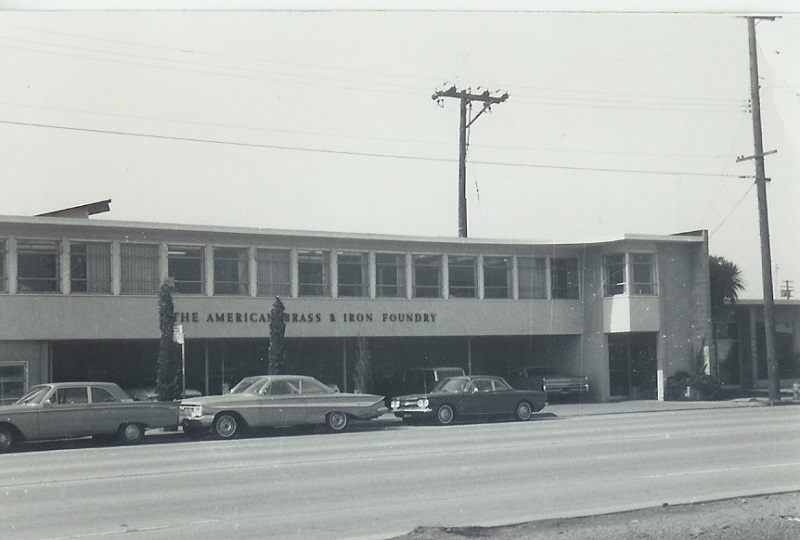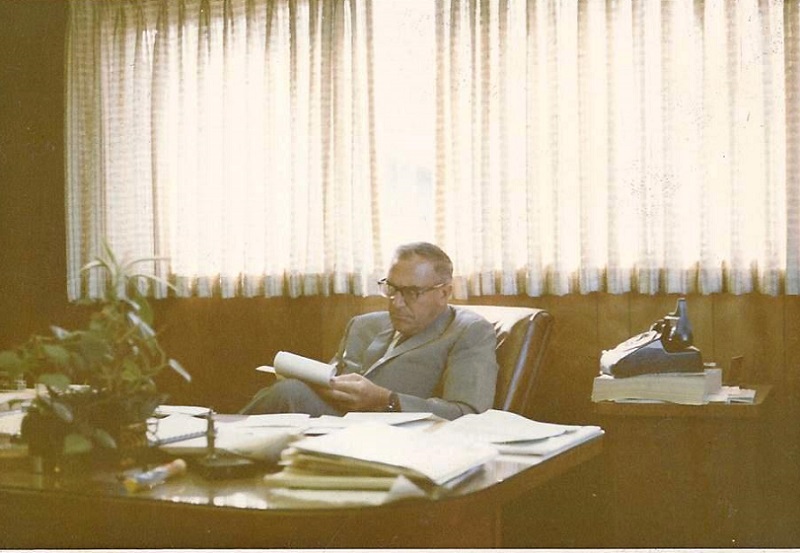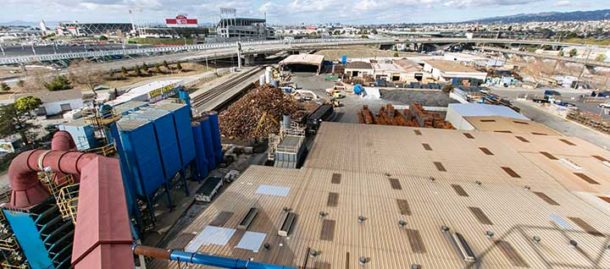Located in the East Bay area of Oakland, near the hollow ground of Oakland Alameda Coliseum, AB&I Foundry has been finding ways to build on its legacy and cutting-edge innovations for over a century. In fact, as a leading producer of cast iron soil pipe, fittings and castings with a distinct black and silver look, one may also wonder where and how the Oakland Raiders came about creating their brand identity nearly 70 years ago. It’s said that AB&I’s Boscacci family was vital in assisting the Raiders establish their community footing and possibly sharing their tradition colors.
Community and team are critical to the history and the future of AB&I. When you drive by the foundry, you can’t miss the big mural that runs a city block on the wall outside of the company. It shows the history of the company through various milestones and despite the location in an industrial area, the wall has never been defaced. One might surmise that this is the ultimate type of respect AB&I has built in the community through their commitment of employing, educating and providing for generations of families. How did it start?

Joseph Boscacci
Joseph Boscacci emigrated from Switzerland to the U.S. in the 1890s, bringing with him an artisan craft. In the wake of the Great San Francisco earthquake and fire of 1906, the young Boscacci worked at General Foundry in San Francisco making bronze statuary, brass street lamps and ornate iron work that was needed for the city’s rebuilding effort.
He also ran his own foundry business on the weekends in the backyard of his home in Oakland. Boscacci and his five sons made a variety of castings, including cast iron fittings, window sash weights and cast iron stove tops for wood burning cook stoves. He called his company American Brass & Iron.
As the decades unfolded and American industry grew, so did the need for cast iron pipe and fittings. By the 1920s, all the Boscacci brothers were involved in the family business. In 1941 the company was moved to their current location on San Leandro Street in Oakland. Just after World War II, brothers Arnold and Eugene took over the foundry and rebranded to AB&I.

American Brass and Iron Foundry in the 1920s
It was the post-war return of the GI’s and housing boom (not too mention ensuing baby boom), that reignited the ever-entrepreneurial Boscacci family back into full production of cast iron pipe and fittings to the ever-increasing demands caused by massive construction boom.
By 1950, AB&I was a leading West Coast foundry and was a founding member of the Cast Iron Soil Pipe Institute (CISPI). Later, AB&I was among the first to champion no-hub cast iron pipe, fittings and couplings, creating its own machines to make no-hub cast iron soil pipe. Ingenuity, forward-thinking and a little risk taking also drove the family to implement automated manufacturing methods.

AB&I in the early 1960s
In the 1960s, the company expanded from selling products mainly in California to distribution across the Western United States. AB&I recognized that establishing relationships was fundamental to the company’s future. They sustained close supply-chain engagement with distributors lasting decades. It was the legacy of those early relationships that still exists today. AB&I believes that integrity is paramount to the company’s success and that you must “do what you say you will do and that best practices in business start with common sense, developing good relationships and attention to detail.”

Arnold Boscacci, mid-1960s
By the third generation of Boscacci family leadership, AB&l’s mission was sternly focused on ways to use new technology to make the best cast iron pipe and fittings in the Western US. Allan Boscacci was now making decisions and with most of the work still being completed by hand, he began to introduce higher production levels and enhance modernization efforts. AB&I was predictably ahead of its time environmentally, installing bag houses to capture foundry smoke, and water treatment plants to clean and reprocess foundry water long before it was a requirement.
In 1969, AB&I was the first soil pipe foundry to install a Disamatic (DISA ) molding machine, automating foundry processes which allowed a higher-quality fitting at a much faster rate.
In the 1980s, AB&I was among the first American manufacturers to engage in profit sharing with all team members and to truly practice “open book” management. By the early 1990s, AB&I was the first foundry to totally automate its pipe production.

Overhead at AB&I Foundry in Oakland
The industry has seen its share of attrition. In its glory, America had 39 foundries that and only three remain today. Consistent with being the “Foundry of the Future,” today’s AB&I has the most sophisticated molding machine in the world, a DISA 270A, and is among those making the highest-quality cast iron pipe and fittings in the world.
AB&I joined McWane, Inc., a large family-owned manufacturer, but remains Boscacci family led. Kurt Winter, Allan ‘s oldest son-in-law drives AB&I to be “better, faster and more innovative,” just as the three generations of foundry men before him.
AB&I supports our plumbing industry with vigorous involvement and are highly active with leading national, regional and local industry organizations including: ASA, MCAA, PHCC, ICC, IAPMO, DBIA, ASPE, ASTM and CISPI.

Custom casting at AB&I Foundry
Today’s AB&I, which employs over 200 team members, is a thoroughly modem, technology-driven foundry committed to responsible manufacturing and safety. They are an environmentally conscience U.S. manufacturer that have invested millions in environmental programs involving air, land and water. In fact, AB&’ls water treatment system is set up so that every drop of rainwater that hits their roof is captured and run through a filtration process and recycled. AB&I aims to be great stewards of the environment for future generations.
Next month will will look at the future of AB&I and share a recent Q&A interview with their team.




Join the conversation: